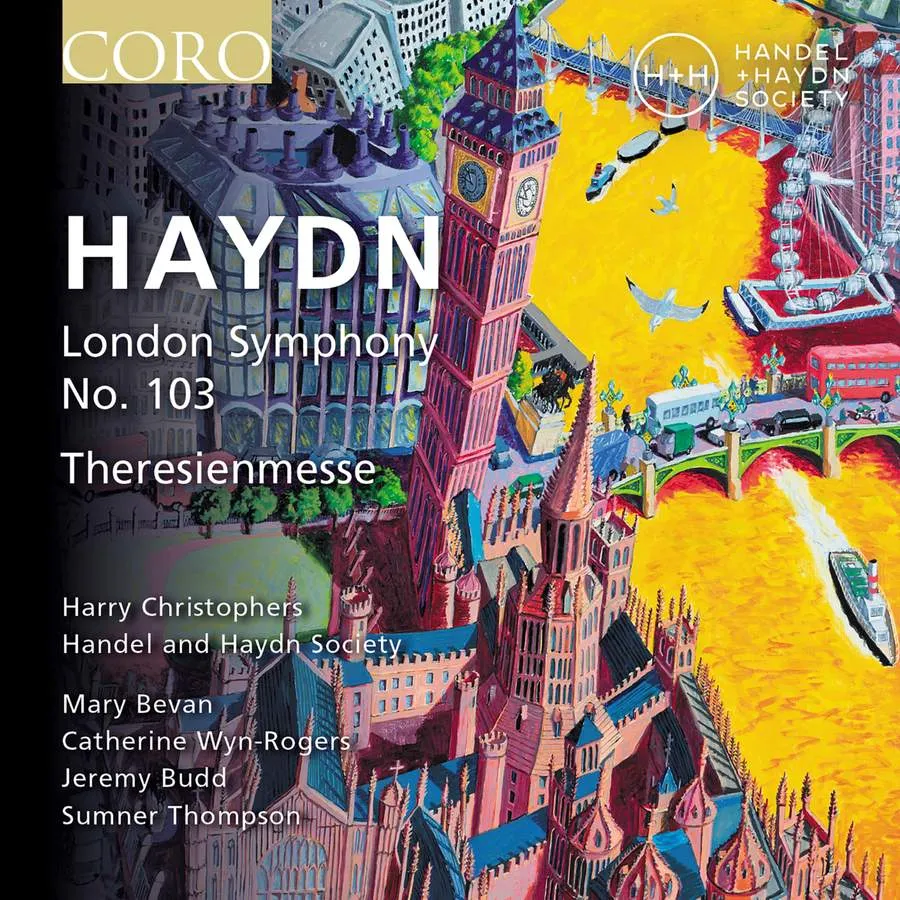
Haydn Theresienmesse; Symphony No. 103, ‘Drumroll’ Mary Bevan (soprano), Catherine Wyn-Rogers (mezzo-soprano), Jeremy Budd (tenor), Sumner Thompson (baritone); Handel and Haydn Society/Harry Christophers CORO COR 16192 74:02 mins
Haydn didn’t offer much guidance as to how he wanted the sustained drum roll that famously begins his Symphony No. 103 played: there’s no dynamic marking, and above and below the notated timpani part he wrote the words ‘solo’ and ‘intrada’. On his 1987 recording with the Concertgebouw Orchestra the ever-controversial Nikolaus Harnoncourt took this as an invitation to let the timpanist loose on a cadenza, and Harry Christophers follows suit on this new version with the Handel and Haydn Society. Yet here is the most sombre and mysterious of all Haydn’s symphonic slow introductions – it’s hard to believe he wanted it prefaced with a flamboyant improvisation. Moreover, the introduction unexpectedly returns in its original slow tempo just before the end of the Allegro, a dramatic coup whose effectiveness depends on the reappearance of the earlier passage just as it was at the beginning, so to introduce a different timpani solo here, as Christophers does, makes no sense. The performance is otherwise decent enough, if rather under characterised and lacking in energy at times.
Fortunately, the Theresienmesse fares considerably better, and Christophers uses his long experience in handling choral forces to good advantage. His soloists respond well, too, to such memorable moments as the austere beginning of the Agnus Dei, or the Et incarnatus est in the dark key of B flat minor, with its aching dissonances, and its low repeated trumpet notes sounding like barely suppressed sobs in the passage setting the words ‘passus et sepultus’.
Misha Donat

